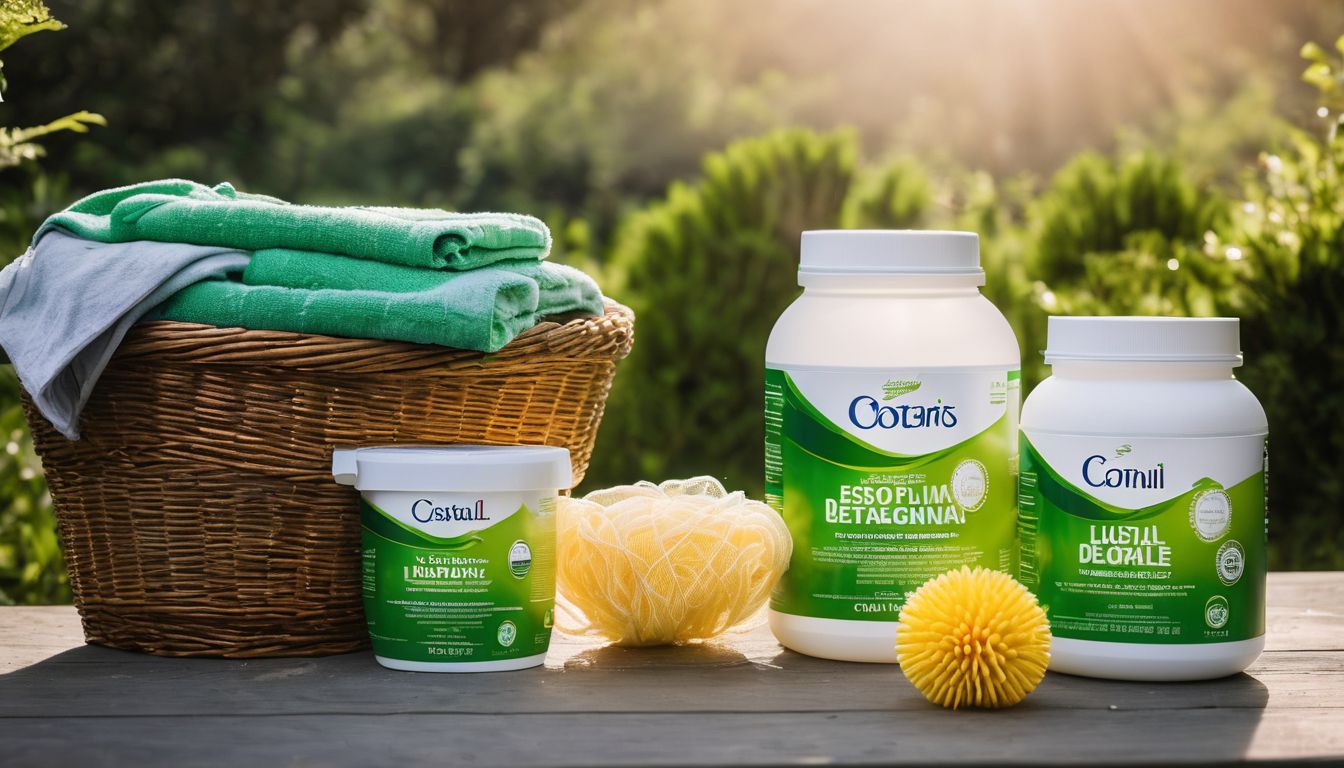Everyone has to do laundry, and for most of us it is not our favorite activity. How can you brighten up this age-old household chore? Try making it more eco-friendly!
BENEFITS to the Environment: Medium to High. Using this guide will help you use significantly less energy, place fewer harmful chemicals into the environment, and save water.
BENEFITS to your wallet: Medium. Less energy used means a lower electricity bill. You may also save on your water bill.
Cost: Low. You’ll probably end up spending less than you did using your normal laundry methods.
Time and Effort: Medium
Instructions:
Washing
1. To ensure that you are getting the most out of each wash, start by only doing laundry when you have enough clothes to make a full load. Put very simply, if each time you did laundry you only did half loads, you would essentially be using double the amount of energy and water. That means that you and the environment will always be paying double.
2. Use cold water. Hot water puts an extra energy burden on each load, and most clothing tags suggest that cleaning your garments in cold water is best for the fabric anyway. Using cold water also prevents colors from bleeding. So, if you only have enough dirty laundry to do one load of mixed colors, cold water will be more effective than hot water in keeping the clothes the colors that they are when they were first put into the wash.
3. If you are in the market for a new washer then you are in luck! Over 25 different appliance companies offer machines that are government approved Energy Star washers, or machines that use far less energy and water than normal appliances do. These standards were developed through the Department of Energy and the Environmental Protection Agency and by January 2011 the criteria will require these machines to be even more efficient. To compare models and prices you can visit the Energy Star website at http://www.energystar.gov/index.cfm?c=clotheswash.pr_clothes_washers to learn more about your options.
If you do not have the money to afford a new washer, simply follow the other steps in this guide for more green options. If you rent a house or apartment that has outdated machines, try contacting your landlord to tell them the benefits of installing energy efficient appliances. Changing the household to energy efficient appliances that have the Energy Star stamp can save a home an average of $75 per year. Plus, new machines increase the value of the house.
And lastly, if you don’t have access to a washer at all and have to instead go to a laundry mat, scout out a few businesses in your area and try to find one that is open early and late and has newer machines. Even if they aren’t Energy Star, chances are that new machines are more energy efficient than machines that are a few decades older. For example, the average household washer in 1984 used 1,457kWh of energy while the average 2002 appliance used only 526kWh and costs three times less in energy bills.
4. But greening your laundry experience is more than just saving water and energy—thus cutting down your green house gas emissions. Using biodegradable detergent will help minimize your contribution of harmful chemicals into the environment. Biodegradable means that these soaps can be naturally broken down back into organic materials, which puts less pressure on water filtration systems and helps reduce pollution of ground and ocean water. When non-biodegradable detergents are being manufactured, the chemicals they are comprised of leak carcinogens and toxins into the environment. And lastly, the harsher chemicals in regular detergents, such as Alkyl phenoxy polyethoxy ethanols, have been linked to chronic health problems as well as were found to cause the growth of breast cancer cells in male fish.
5. Only use dry cleaning when absolutely necessary. According to the Center for Disease Control, dry cleaners often use perchloroethylene or more commonly known as perc. Perc has been linked to liver damage, cancer, neurological problems as well as environmental poisoning in the areas in which it is used. Garment tags that suggest dry clean only can often be instead washed in the sink by hand or run on a gentle cycle. To wash by hand, simply fill a sink with water and add a dash of laundry soap. Rub the piece of clothing on itself, just as if you are washing your hands. Do this for a few minutes and then rinse out the garment until the water runs clean and doesn’t have any soap in it. Hang it to dry as a dryer’s cycle may be too vigorous for the clothing.
6. Doing laundry at non-peak hours, such as later at night or very early in the morning is beneficial to your energy provider and there is a good chance it will cost you less on your energy bill. You may think, “What’s the difference? My washer and dryer will use the same amount of energy no matter what time of day they are run.” This is true, however, running appliances like a washer during the day when energy use is at is highest puts strain on the energy system. When energy is in too high demand, the electricity grid becomes over burdened and is forced to shut down causing rolling blackouts. Clothes washers and dryers alone account for nearly 7% of residential energy usage (all household appliances used more than a third of a home’s energy). Doing laundry at night or early in the morning when energy supply is high and demand is low helps reduce daytime over burdening. And non-peak hour electricity cost less per kilowatthour than peak electricity does, saving you money on your next energy bill.
7. Find an alternative to bleach. Bleach is a harsh chemical because it contains chlorine, an unstable element that can be used as a pesticide to a toxic gas, as it was in World War II. Though experts are still debating whether it is harmful to humans in small doses, there are alternative forms of bleach that do not contain chlorine and are therefore probably safer to use. Oxy-Boost and The Natural are two non-chlorine bleaches that are color-safe, though they are a bit more expensive—2.5 pounds will start around $12. These products can be purchased at http://www.greenhome.com/products/housekeeping/bleach_alternatives/.
Drying
1.Using a machine dryer costs the average home somewhere between $100 to $200 annually, and though companies such as Energy Star offer washing machines that use less energy, these companies have not yet produced a dryer that has comparable energy savings. The only way to reduce energy spending is to instead solar dry clothing using a clothesline or a drying rack. If you don’t have a yard, drying racks are a perfect alternative. They are compact and easy to store, in use they don’t take up very much space, and they are cheap. Check your local hardware store first. My mom got one at Ace Hardware for only $15!
2. If you are worried about having lines in your garments, hang your clean laundry on hangers. Plastic, thicker hangers leave less harsh indents than metal hangers. You can also hang these on a curtain or blinds bar above an open window and let the fresh air dry them out.
3. If you do your laundry at night you can hang your clean laundry on a drying rack next to an open window. Just let it dry! Then by the morning all you’ll need to do is possibly a little bit of ironing. Or if you are a morning person, throw your laundry in before you go to the gym or for a run. When you come back your clothes will be ready to be dried and you will have saved yourself an hour or so of waiting around wondering when the laundry will be done. Then you can hang your clothes and by the time you return from work you will have clean, dry clothes to wear the next day—since they are hung dry you won’t have to worry about wrinkles!
For one person’s experience with eco-friendly drying behavior, check out: “Oh Dry Up”.
The Essential Take-Away
Overall, the most important thing you should think about when doing laundry is: How can I lower my electricity bill? Thinking about it financially often puts energy use into perspective and helps you reduce at home energy consumption. Just remembering to “fill it full, wash it cold, and let it dry” will help you turn your at home laundry program into a more environmentally friendly operation.




